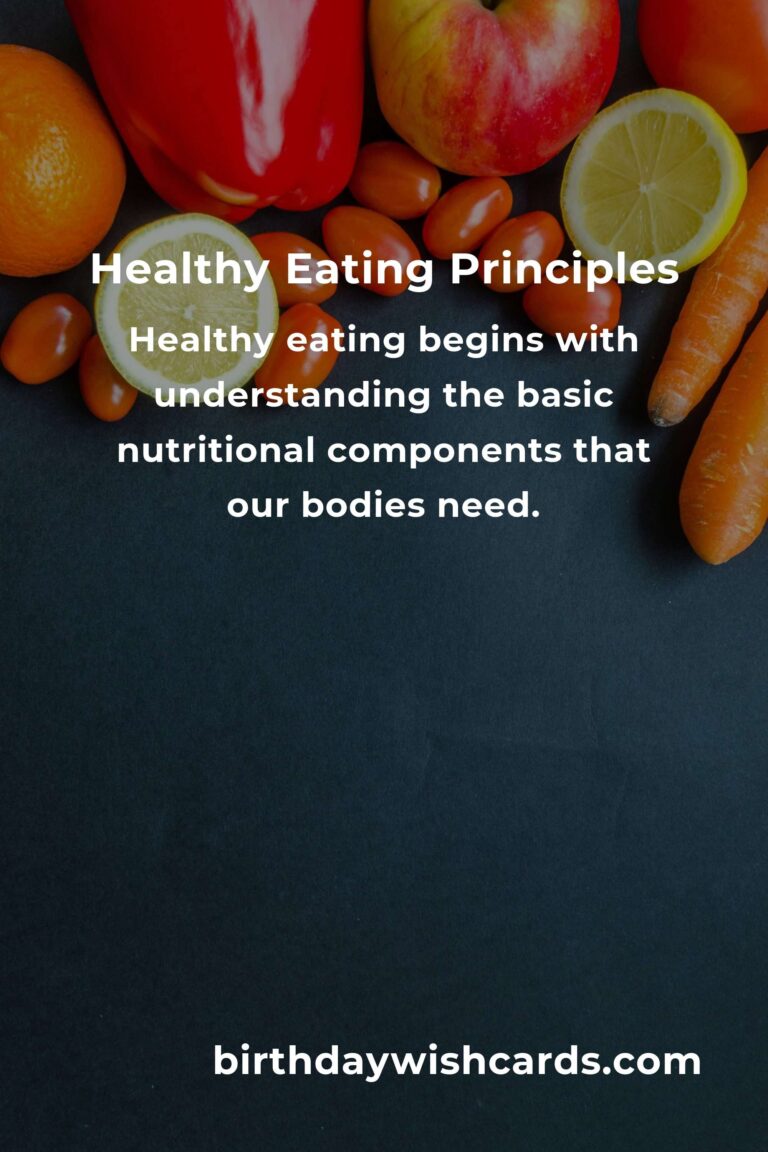
In the modern world, with an abundance of dietary advice and nutritional information, understanding the core principles of healthy eating can be overwhelming. This guide aims to simplify these concepts, offering clear and actionable insights into maintaining a balanced diet.
Understanding Nutritional Basics
Healthy eating begins with understanding the basic nutritional components that our bodies need. These include macronutrients such as carbohydrates, proteins, and fats, as well as micronutrients like vitamins and minerals. Each of these plays a crucial role in maintaining bodily functions and overall health.
Carbohydrates are the body’s primary energy source. They should predominantly come from complex carbohydrates such as whole grains, vegetables, and fruits, which provide sustained energy and essential nutrients.
Proteins are vital for building and repairing tissues. Sources of healthy protein include lean meats, fish, beans, and legumes. Incorporating a variety of protein sources can ensure a complete amino acid profile.
Fats, often misunderstood, are essential for hormone production and the absorption of fat-soluble vitamins. Healthy fats are found in foods like avocados, nuts, seeds, and olive oil. It’s important to limit saturated and trans fats to maintain heart health.
The Importance of Portion Control
Portion control is a key element of healthy eating that helps manage calorie intake and supports weight management goals. Understanding serving sizes and adjusting portions based on activity level and personal health goals can prevent overeating.
Incorporating Variety and Balance
A varied diet ensures a broad intake of nutrients. Aim to include a colorful array of fruits and vegetables, which are rich in vitamins, minerals, and antioxidants that protect against chronic diseases.
Balance also involves combining different food groups in meals to provide a mix of nutrients. For example, a balanced meal might include whole grains, a source of protein, healthy fats, and a variety of vegetables.
Mindful Eating Practices
Mindful eating involves paying attention to hunger cues, eating slowly, and savoring the flavors and textures of food. This practice can improve digestion and satisfaction, reducing the likelihood of overeating.
Hydration and Its Role in Health
Staying adequately hydrated is crucial for health. Water supports bodily functions such as temperature regulation, joint lubrication, and nutrient transport. Aim to drink at least eight glasses of water a day, adjusting based on activity level and climate.
Conclusion
Adopting healthy eating principles doesn’t have to be complicated. By focusing on nutritional balance, portion control, variety, and mindfulness, you can cultivate a diet that supports a healthier lifestyle and wellbeing.
Healthy eating begins with understanding the basic nutritional components that our bodies need. Portion control is a key element of healthy eating that helps manage calorie intake and supports weight management goals. A varied diet ensures a broad intake of nutrients. Mindful eating involves paying attention to hunger cues, eating slowly, and savoring the flavors and textures of food. Staying adequately hydrated is crucial for health.
#HealthyEating #Nutrition #Wellness #DietTips #MindfulEating













